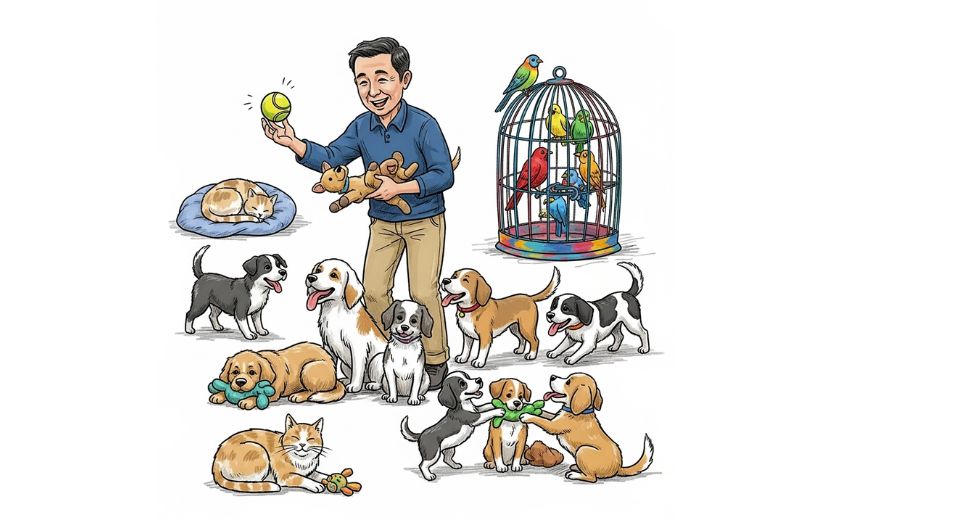
Jul 25, 2025

The Global Pet Daycare Market Report released recently by Metastat Insight illuminates a industry that has developed quietly into an important component of the larger pet services sector. Instead of using broad brushstrokes, the research presents subtle trends and unique trends that expose how pet owners in today's world are redefining what care looks like for their animals while absent from home. This is no longer just about pet-sitting this is a result of deeper behavioural and cultural shifts among consumers and businesses alike. A slow scan of the state of the Global Pet Daycare Market today shows how demands on such services have evolved far beyond custodial care.
Owners now expect complete engagement of their pets, from socialization to structured play and wellness management. These expectations have prompted operators to reimagine their spaces. It's not at all unusual today for daycare operators to offer specialized services for individual breeds, sizes, temperaments, or even feeding characteristics. The classic form of holding pen has increasingly been supplanted by interactive and secure areas with the goal of building trust, familiarity, and exercise. Surprisingly, one of the defining features that come out of the Metastat Insight report is the way emotional bonding between pet and caregiver has become an unofficial currency of trust in this sector. This isn't just a transactional relationship any more.
Owners are more likely to opt for centers where caregivers recognize animals as individuals as opposed to generalized partakers in a formula. These establishments build up reputations not just through marketing, but through stories, word of mouth, and emotional imprints left behind by happy clients and pets. Additionally, the emergence of niche staffing profiles indicates the extent to which service providers are investing in quality and distinction. The staff at these centers tend to have backgrounds in animal psychology, behaviour study, or even alternative treatments. Though this information may not necessarily be presented on a brochure, it is found in the quiet assurance pet owners have of repeat visits.
The confidence, once gained, tends to span years, crossing generations of pets under one roof of care. One of the most revealing trends concerns the digitalization of communication between pet parents and service facilities. From live webcam streams to instant app alerts, the position of transparency has become critical in building the bond between clients and facilities. Owners are not leaving their pets behind; they are remaining connected through the day in unobtrusive, yet comforting, manners. The industry's response to these needs has facilitated choosing between providers that fit their values, be they environmental considerations, attention to mental stimulation, or added security features.
What's interesting is that the diversity in facilities tends to mirror cultural inclinations by region. In some regions, pet daycare will be upscale, where cats and dogs are treated to massages and gourmet cuisine. Somewhere else, the focus might be on group play and exercise. This subtle diversification does not water down the fundamental offering; rather, it raises the idea to meet individualistic demographic values and regional pet-parenting standards. This serves to fortify the fact that the Global Pet Daycare Market is not an oneness but a tapestry where various trends peacefully co-habit.
Corporate influence, while subtle, also has its place in the market fabric. As more city workers become pet parents, and as work hours vary with hybrid schedules, the reliance on trustworthy daycare centers increased. These clients demand flexible times, sanitized facilities, and tranquillity of mind. Providers have in turn adjusted schedules, pricing structures, and pickup/drop-off arrangements to accommodate this dynamic customer base. This blend of contemporary work culture and mature pet ownership supports a new generation of demand that was less apparent in previous decades. One should observe how seasonal behaviours also contribute to the beat of this market.
Holiday seasons, school vacations, and travel seasons perennially introduce spikes in bookings. Some centers have, however, shifted towards providing continuity plans, whereby animals go to daycare not only when absent, but as a standard feature of their weekly routines. This ensures emotional stability in pets while allowing for consistency in the owners. The concept of 'routine' has seeped in as a soothing influence, both for pets as well as for their caretakers.
The value of the Metastat Insight report is not in what it says explicitly, but rather in how it succeeds in highlighting subtle developments that would otherwise be lost in superficial perceptions. It neither sensationalizes growth nor dramatizes adversity. Rather, it is a reflection of an industry that has progressively matured, welcoming changes with understated confidence and specific solutions. Coming back to the reflective report laid out by Metastat Insight, what comes out is a presentation of a market that is characterized more by empathy than strategy, more by trust than transaction.
The Global Pet Daycare Market is now not just a support service, but a friend in the changing storyline of the way people take care of animals in their lives. It is this very sensibility this gentle shift from needs to emotional reach that denotes the sector's current metamorphosis.
Drop us an email at:
Call us on:
+1 214 613 5758
+91 73850 57479